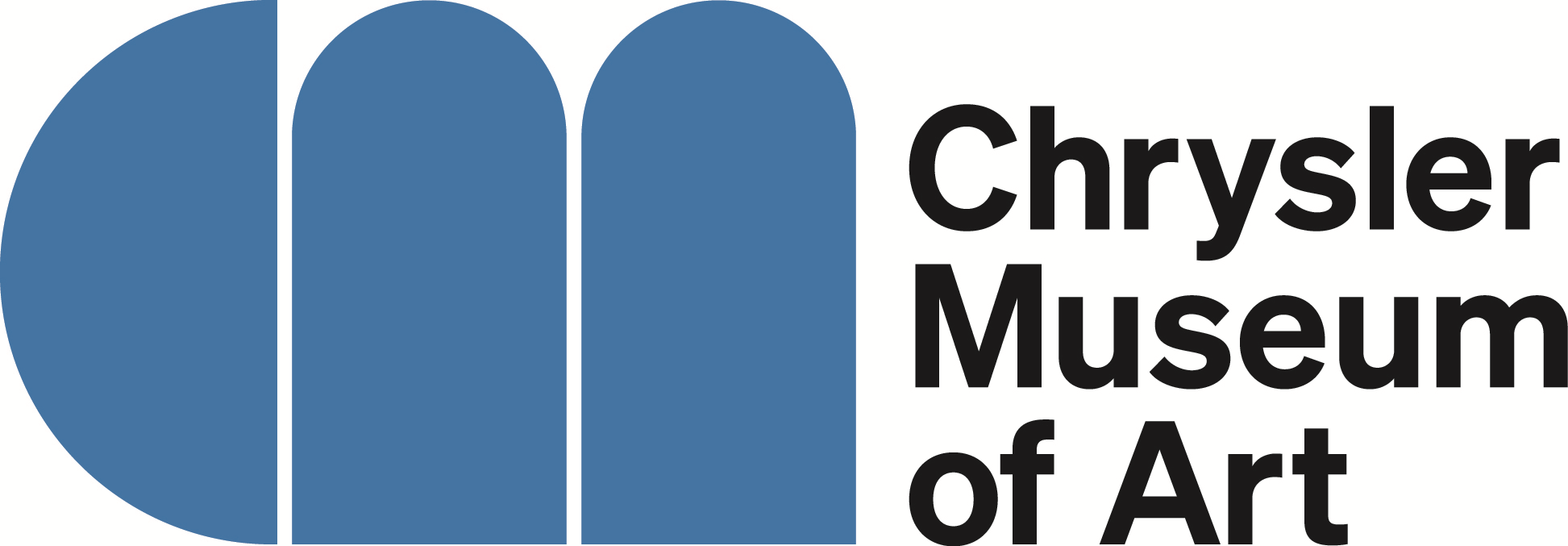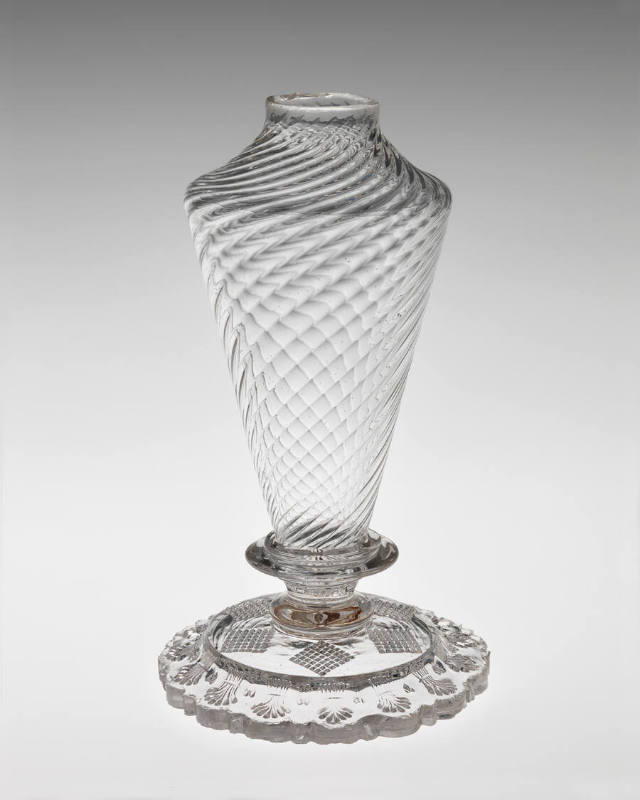Whale-Oil Lamp With Cup Plate Base
ManufacturerPossibly
Boston & Sandwich Glass Co.
(American, 1826-1888)
CultureAmerican
Dateca. 1828-1835
MediumMold-blown glass | Lead glass | Pressed glass
DimensionsOverall: 6 9/16 in. (16.7 cm)
Base: 3 11/16 in. (9.4 cm)
Base: 3 11/16 in. (9.4 cm)
Credit LineMuseum purchase with the Assistance of Mr. and Mrs. Richard D. Roberts
Object number93.3
On View
Chrysler Museum of Art, Gallery 116-3, Case 19
Label TextCup-Plate Foot Whale Oil Lamp Eastern United States, probably the New England Area, possibly the Boston & Sandwich Glass Co., Sandwich, Massachusetts, ca. 1827-1835 Lead-formula glass, blown-molded and twisted, 20-rib font hot-joined with a wafer to a pressed cup plate Museum Purchase with assistance from Mr. and Mrs. Richard D. Roberts 93.3 By using a pressed cup plate to form the foot, glassmakers were able to ornament small lamps that otherwise would have been plain. Most cup-plate foot lamps have plain blown fonts. This example has the added interest of a very rare spiral font which was accomplished by blowing the glass into a ribbed dip mold and then giving it a twist after it was removed from the mold. Deming Jarvis, agent for the Boston & Sandwich Glass Co., may have been describing this kind of font in January 1829, when he sent these observations and instructions from Boston to the factory in Sandwich: "The twisted lamps sell very well. When the metal is seedy or corded, make them well twisted. The straight ribbed is not so much liked." Edited By: KML Edited Date: 08/16/2006Exhibition History"Treasures for the Community: The Chrysler Collects, 1989-1996," October 25,1996 - March 2, 1997 Published ReferencesBourne, _Elsholz Collection_, vol. 1, no. 103, "considered unique" -- sold for $900 in 1986, see also nos. 99, 109. Lee and Rose, p. 80, no. 50. "With but one specimen known without the pontil mark (in the Essex Institute), it may be that these [cup plates] were made as a base for lamps or candlesticks. We have seen, however, two sets ... with pontils which seem to prove they were used as cup plates... Extremely Rare." Helen McKearin, "New England Glass Company Invoices," _Antiques_ (Dec. 1947), pp. 57-8. New England Glass Co. bills of September 1828, and April and May 1829, refer to "cup plate foot ... lamps".
ca. 1827-1830
1820 - 1840
Boston & Sandwich Glass Co.
ca. 1830-1840
ca. 1830-1840
ca. 1830-1840
ca. 1830-1840
ca. 1830-1840














